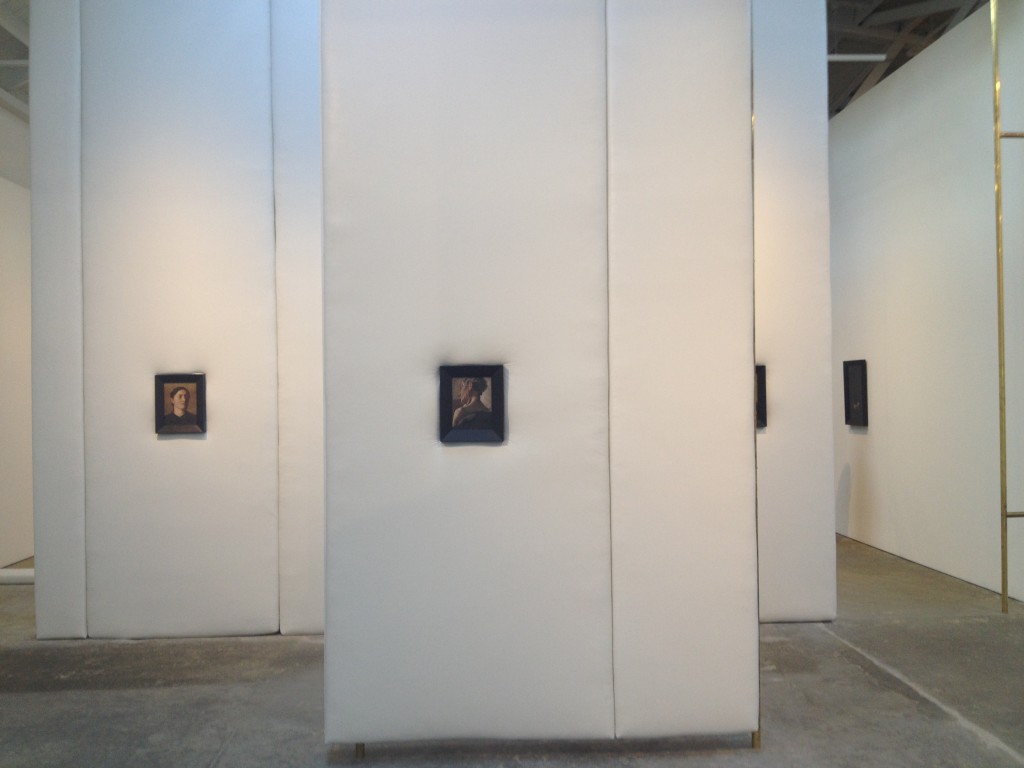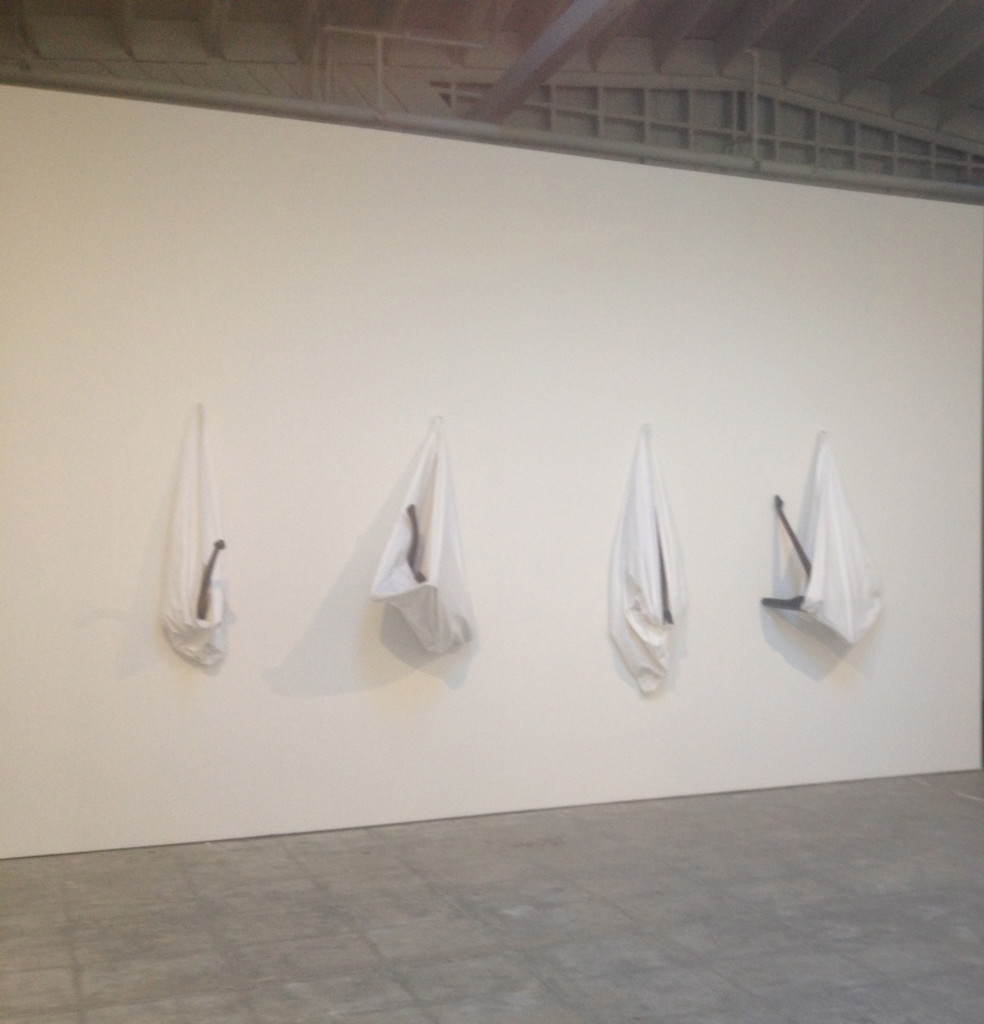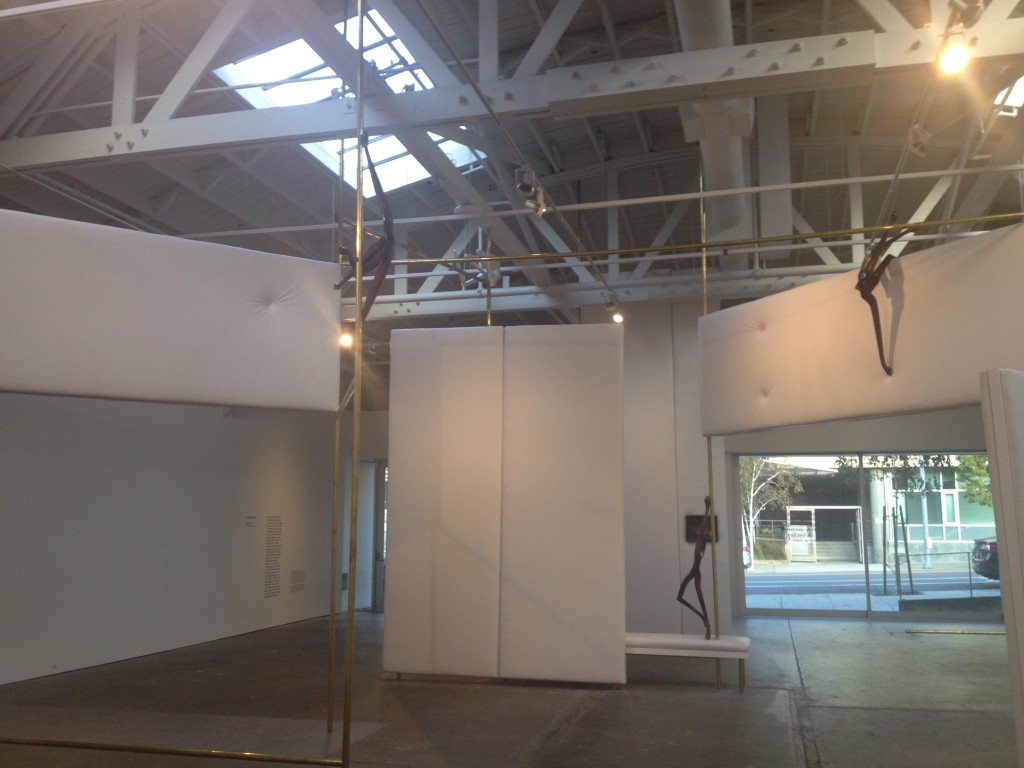
Imagine a nightclub full of pole dancers, only the club is a gallery and the dancers are chair legs. Keep the poles. Add some paintings. Imagine that, if you will, and you will be halfway immersed in my experience of the Markus Schinwald installation at the Wattis Institute in San Francisco. The installation, presented as part of the SFMoMA’s traveling collection, shocked and confounded me. Schinwald plays with the tension between human and object. They bleed together in his anthropomorphic furniture sculptures and futuristic paintings.
The Wattis Institute, an intimate gallery space a few blocks away from, and affiliated with, the California College of the Arts, typically displays one exhibit at a time. Its high ceilings, glass walls, and bored receptionists invited me in. I should confess that I had been walking for an hour before entering this gallery. Convinced I could navigate my way there with no problem, I ended up dropping a Google Maps pin into a nearby park and getting terribly lost. So by the time I found the gallery I had walked so far to see, I was ready to stand still and let some art wash over me. That proved impossible. The exhibition pulsed with the hammering energy of broken boundaries and forced me to engage.
The installation was laid out across the two neat, small rooms of the Institute. The front room contained large white demi-walls, small paintings, and poles with the legs of Chippendale table legs suggestively crossed on them. In an attempt to humanize the mundane, Schinwald thrust the table legs out of their expected context and onto stripper poles. Chair legs straddled and crossed the poles, completely detached from bodies or tabletops. My friend commented that he had never thought furniture could be so sexy.

The artist’s statement that, “I’m not trying to rob people of their personalities, but to give objects personalities, too,” rang true. In a gallery empty of visitors besides my friend and me, I met these human-like objects. The table legs felt like fellow visitors to the space. Maybe these inanimate objects wouldn’t have felt so lively if there had been other people in the room moving around doing human things. But in the still space, if not human, they at least felt dynamic. They were moving, pulsing, provocative. The inspiration to make a Chippendale’s dancer pun crossed my mind – but my befuddlement at the second room of the installation quickly pushed that thought out of reach.
The back room of the gallery was about half of the size of the front room but twice as pathological. This room featured a simple set-up: one pole and four body-bags with chair legs sticking out of them. These legs were truly unsettling in their humanity. Captured in the poses of struggling humans, these legs pushed out of their billowing bags. You know that feeling when you look at a photo of a running man, and you can tell, even though the photo has trapped him in a moment, that he’s running? It was like that. “Uninhibited by their objecthood,” as the artist imagines, the table legs urgently kicked. While the front room felt full of dancers, this room writhed with the angst of creatures in pain.
Scattered along the walls of both rooms was an uncompelling collection of updated 19th century portraits. The portraits featured normal human faces onto which Schinwald had then painted orthodontia and metal gear. Bolts, headgear, and the like were affixed to otherwise drab faces. Schinwald pushes at the assumption that people are not machines. On paper, the attempt to break the barrier between humans to objects seems like a valiant goal. But for me, the paintings fell short. They were slightly kitschy, average paintings of subjects wearing orthodontia. Think hotel-room portrait meets a school picture of a 9-year-old in headgear.

Not nearly as edgy or dynamic as the rest of the exhibit. In attempting to show the exact converse of the human-like objects, to make object-like humans, Schinwald produced a contrived parallel. The objects in the space became wonderfully human, but the attempted converse did not convince me. Schinwald describes his exhibit as a body, a single organism. But as Schinwald’s painted machinery felt extraneous to the faces in the portraits, the paintings themselves were tackily affixed to his otherwise complete space.
Regardless, the dynamic dancing of the objects in this exhibit smacked me in the face. Long after I had “seen” everything in the small gallery, I lingered in order to recover. Before returning to the normalcy of the real world, I needed to revel in its energy. Unlike a crowded museum, this empty installation invited me to silently oscillate between human and something beyond without a flurry of tourists on every side. Eventually, my friend nodded at me, and we felt it was time to leave. We turned toward the glass door, stepped onto the too-sunny street, and my friend said to me, in his thick British accent, “I think that may have all been a load of bullshit.”
I thought for a moment, and I didn’t disagree. Maybe he’s right. Maybe Schinwald’s failure to cohesively engage the disparate elements of his gallery made this installation bullshit. But I know that for at least a moment in that space, I left table legs pulling me upward into a space I hadn’t expected to reach that day. Uninhibited by objecthood, Schinwald’s furniture pulled me in.
